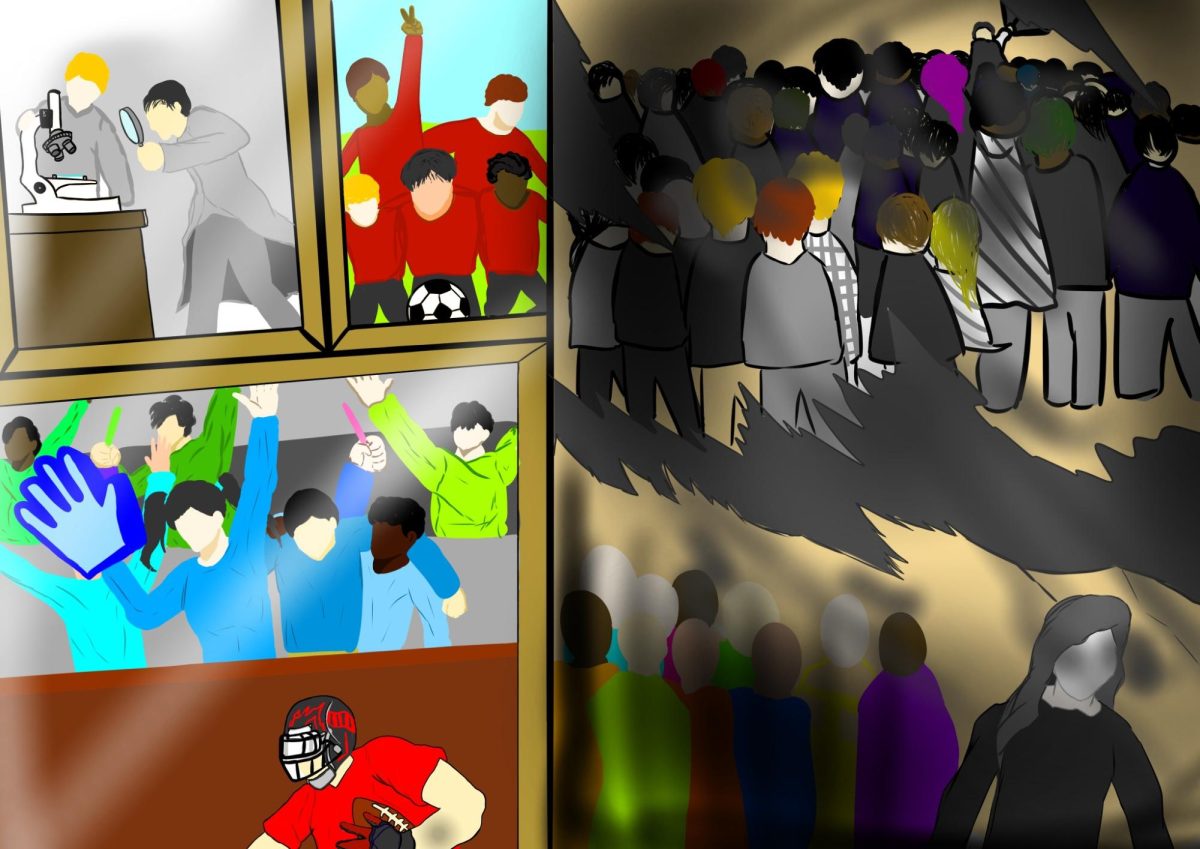Pro — by Sneha Lele
Knee-deep in college applications, seniors look ahead to the next step in their academic career. When it comes to selecting a university, one of the larger questions students face is whether to attend a large university, or attend a smaller, more close-knit school. However, big universities have special characteristics that add to the college experience, while still guaranteeing success in academic pursuits.
Arguably, the most valuable factor is that larger universities’ undergraduate populations create extensive alumni networks. These networks not only bring funding to the institution but also provide invaluable opportunities for students to work in research alongside highly respected professors and faculty. These networks can not only increase institutional funding, but they increase the amount of career or research opportunities. The power of a strong alumni network, such as those in Yale, Stanford, Columbia, USC, etc, are all known for their supportive alumni, opening opportunities for newer recent graduates in highly competitive industries.
Large universities also offer a wide range of academic programs, majors and research opportunities. While larger universities do have greater student ratios, these institutions compensate with their extensive resources available for students. For instance, the University of Texas at San Antonio achieved a record high research expenditure in 2023, marking $152.3 million in total, a 7.5% increase previously, demonstrating the large amount of funding available for research in topics such as cybersecurity, brain health and sustainable energy.
Alumni contributions are also an essential part of university growth, providing financial support, mentorship and collaboration on research initiatives. These donations provide financial backing needed for new research labs, scholarships and other programs, with universities boosting active alumni networks seeing a 25% increase in research funding.
In addition to academic resources, larger universities offer countless opportunities for students to engage in their communities through social activities and community building events like Greek life. Sororities, fraternities, and campus wide activities foster a strong sense of community. Rather than an isolated college experience, larger universities provide more opportunities for students to connect with one another and contribute to their campus energy. Florida International University, for example, has sororities and fraternities highly involved in philanthropy events, like Relay for Life, while Indiana University holds a variety of these greek events of social gathering such as their National Hazing Prevention week that is designed to support mental health and wellness of their students.
With that said, smaller universities also have their advantages, depending on a student’s needs. Many argue that smaller class sizes lead to more personalized learning, allowing students to get more out of their classes. However, while this personal touch has its benefits, it comes with limitations. The number of research opportunities, academic programs and possible connections available at smaller schools still does not match the scale and intensity of those at larger universities.
Larger universities undoubtedly have unique advantages that smaller universities simply cannot offer.
As they say, go big or go home.
Con — by April Kato
It’s the fall of your senior year, and it seems like everyone is applying to the same big colleges — ones that have been familiarized since childhood — but you wonder if you are missing out on other opportunities that frequently get overshadowed by the presence of these popular institutions.
It’s easy to be attracted to big colleges — they’re popular, very well-known. But what often comes neglected are the possible shortcomings of attending a big college capsulating thousands of students. While there are equally great characteristics, the provided learning environment is not uniformly suitable for all individuals.
According to the College Board, a college or university population is considered small when under 5,000 students and large when over 15,000 students. At large universities, class sizes can be expected to reach, or even surpass 100 students, by contrast to California’s average high school class size of 27.1 students (National Center for Education Statistics 2020-21). Hence with a larger professor-to-student ratio, incoming students may find it difficult to obtain a thorough understanding of the material, and ultimately the assistance they need.
For individuals that work better in small groups, learning at big colleges is not the most ideal. Aside from academics, one may find it challenging to navigate social life in large communities. With an enormous student population and number of classes, one likely will not have multiple classes with those they are familiar with, let alone develop a more intimate connection with peers when compared to a scaled-down student body. Colleges provide a whole new world of social opportunities, but immediately transitioning into a community of many folds can be stressful. Students are more likely to end up as one of a thousand rather than discovering their identity and expressing themselves as such.
This is not to mention the many housing problems that accompany such large institutions. For instance, the University of California, San Diego experienced a major housing shortage during July of 2021 that drove more than 3,000 students into uncertainty of being housed on-campus (San Diego Union-Tribune). Even today, students experience struggles in finding on-campus housing and approval for apartment choices due to the exponential rise in admissions that are incompatible with available housing. Thousands of UCSD students are on waitlists for housing for the upcoming fall quarter, according to the San Diego Union-Tribune.
By contrast, attending a school smaller in size could help avoid a majority of these problems.
With a smaller student population, these colleges tend to have smaller classes and a lower professor-to-student ratio, facilitating the process of students seeking individual assistance.
Socially, small colleges are less daunting. While programs offered may be fewer compared to big colleges, it is safe to say there are higher chances of building close relationships.
Nonetheless, large universities have distinct advantages as much as small universities have their shortcomings. Large universities provide the foundation for a wide and long lasting network. There is also an unmatched variety of academics, sports, music and other extracurricular programs offered. It all depends on what the applicant finds most appealing.
Both types of colleges embody unique characteristics and vary even more across individual schools. While it is easy for applicants to lose sight of what will be a suitable fit, it is important to consider what qualities match their ideal college life more so than being absorbed in rankings and name recognition.












